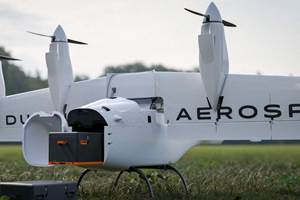Composites, chemistry and science
I met a guy in bar. We started talking composites. I learned some important things.
I flew to Tampa in mid-October to attend the COMPOSITES & POLYCON show. I got in late but, having foregone dinner at the airport, I decided to grab a sandwich in the hotel bar and watch a few innings of the Red Sox vs. Indians baseball playoff game. There was, as usual, a small collection of folks like myself — slightly worn, slightly frayed business travelers — scattered about. I found myself seated next to an outgoing, demonstrative and affable man about my age and we soon began chatting. We worked through the usual topics of family, home and baseball and then settled on the “So, what do you do?” question. “Well,” he said, “I own an engineering company that troubleshoots compression molding processes.”
His name, it turns out, is Mark Bohler, and he’s the president of Plant Engineering Services, based in Ft. Wayne, Ind. Mark and I talked at length about his history, his work, my work, the business of troubleshooting compression molding systems, hardware and software that he’s developed to do his job, plants he’s been in, people he knows, etc. The crux of our discussion, and Mark’s nuggets of advice regarding the creation of a robust compression molding process, can be found on p. 32 as a sidebar to this month’s story on sheet molding compound (SMC) use in nonautomotive applications.
Of all the things Mark and I discussed, the one that sticks with me most is his comment, “We’re in the business of bringing science to the process.” He described several molders he’s visited where, it was alleged — by the plant manager, shift supervisor or project manager — that a certain compression molding machine could be run successfully only by a certain operator who worked on a certain shift, and that this operator had the “touch” and “knew” the machine like no-one else in the world. Woe to the molder should such an über operator fall ill, quit or be run over by a bus.
“And yet,” says Mark, “in 30 minutes, I could do an assessment of that machine and, with minor adjustments, have it making perfect parts.” Indeed, the hardware and software he’s developed are very good at determining just how well a compression molding machine opens and closes, and many of his clients’ problems start and end there.
Molding, he adds, is not magic or art or a matter of “feel” or “intuition.” “It’s a scientific process that relies on scientific principles.” In fact, Mark told me that in the decade that he’s been at this, he and his engineers at Plant have never been stumped by a compression molding process gone bad.
There was in this conversation a certain déjà vu quality. I was reminded of a conversation I had in February 1997 with the plant manager of an injection molding plant in northern Wisconsin. I was there on a plant tour with a consultant who does for injection molders what Mark Bohler does for compression molders — optimize the process. This molder was confounded by one machine running one mold and producing out-of-spec parts, and only “Bob” on third shift could “make this thing make good parts.” Then, as now, it took a little analysis and scientific observation, some convincing, a lot of data and a short course in fluid dynamics to make everyone understand that tangible, adjustable, and manageable mechanical forces were at work on the machine (not the magic of the third shift), and that specs could be developed so that anyone could run it to make good parts. Many composites manufacturing processes are complicated and not always understood by the user, but none of them are unknowable, unsolvable mysteries.
Related Content
Dieffenbacher acquires Schmidt & Heinzmann composites business
The acquisition, which includes all intangible assets of the business unit, will expand Dieffenbacher’s SMC delivery spectrum, enable potential for portfolio growth and synergies.
Read MoreWAG Wernli to produce composite brackets for Dufour Aero2 drone
The Swiss company was chosen for its C-SMC expertise, which will replace original aluminum brackets to enhance weight savings, corrosion resistance and adhesive bonding capabilities.
Read MoreMar-Bal expands SMC expertise through AltraSet materials division
The BMC company aims to fill the SMC market gap for those seeking optimal, low-volume demand with custom formulation and high material value.
Read MoreSMCCreate 2025 event returns to Prague
Industry professionals are invited to the Nov. 4-5, 2025, event discussing developments, applications, best practices and solutions in SMC and BMC.
Read MoreRead Next
Scaling up, optimizing the flax fiber composite camper
Greenlander’s Sherpa RV cab, which is largely constructed from flax fiber/bio-epoxy sandwich panels, nears commercial production readiness and next-generation scale-up.
Read MoreNext-gen fan blades: Hybrid twin RTM, printed sensors, laser shock disassembly
MORPHO project demonstrates blade with 20% faster RTM cure cycle, uses AI-based monitoring for improved maintenance/life cycle management and proves laser shock disassembly for recycling.
Read MoreCutting 100 pounds, certification time for the X-59 nose cone
Swift Engineering used HyperX software to remove 100 pounds from 38-foot graphite/epoxy cored nose cone for X-59 supersonic aircraft.
Read More












